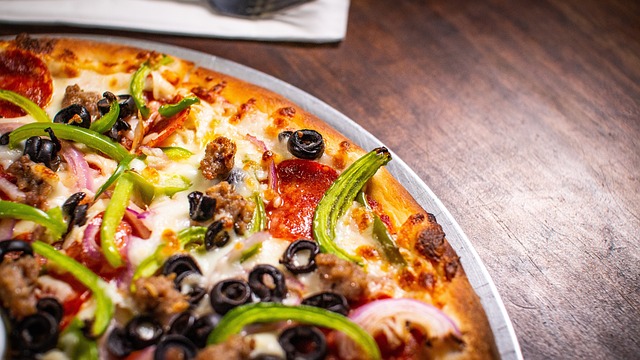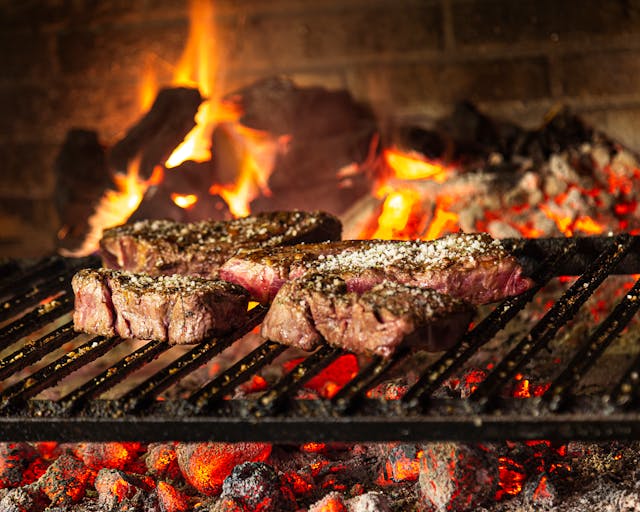In recent years, the food delivery industry has experienced explosive growth, fueled by shifting consumer preferences, advances in technology, and changing lifestyles.
With the convenience of ordering meals with the tap of a finger, more people than ever are turning to food delivery services to satisfy their cravings and simplify their busy lives. This surge in demand has created a fertile landscape for aspiring entrepreneurs seeking to carve out their slice of the market.
But what does it take to succeed in the competitive world of food delivery? From identifying market opportunities and building a robust business model to navigating logistical challenges and delivering exceptional customer experiences, the journey from concept to thriving enterprise is multifaceted and complex.
In this comprehensive guide, we’ll explore every aspect of starting a food delivery business, providing aspiring entrepreneurs with the knowledge, insights, and strategies needed to turn their culinary dreams into reality.
Understanding the Market Landscape
Before diving into the intricacies of launching a food delivery business, it’s essential to gain a deep understanding of the market landscape. This involves analyzing current trends, identifying target demographics, and assessing the competitive landscape to uncover opportunities for differentiation and growth.
Whether it’s catering to health-conscious consumers, offering ethnic cuisine options, or specializing in niche markets like meal kits or subscription services, a thorough understanding of market dynamics is critical for success.
Crafting a Compelling Business Model
At the heart of every successful food delivery business lies a robust and scalable business model. This involves defining key elements such as revenue streams, pricing strategies, delivery logistics, and customer acquisition channels.
Entrepreneurs must carefully consider factors such as delivery radius, order volume, and operational efficiency to ensure profitability and sustainability. Additionally, incorporating innovative features like real-time tracking, personalized recommendations, and seamless payment options can help differentiate your business and attract loyal customers.
Navigating Operational Challenges
Launching a food delivery business comes with a host of operational challenges, from sourcing ingredients and managing inventory to coordinating delivery logistics and ensuring food safety.
Entrepreneurs must develop efficient processes and systems to streamline operations and deliver a consistent and high-quality experience to customers.
This may involve forging partnerships with local restaurants, investing in technology solutions, and implementing rigorous quality control measures to maintain standards across the board.
Delivering Exceptional Customer Experiences
In an increasingly competitive market, delivering exceptional customer experiences is paramount to success. From user-friendly ordering platforms and timely deliveries to responsive customer support and personalized recommendations, every interaction with your brand shapes the perception of your business.
By prioritizing customer satisfaction and continuously seeking feedback, entrepreneurs can foster loyalty, drive repeat business, and differentiate their brand in a crowded marketplace.
Embracing Innovation and Adaptation
The landscape of the food delivery industry is constantly evolving, driven by changing consumer preferences, emerging technologies, and external factors such as global pandemics. Successful entrepreneurs must remain agile and adaptable, embracing innovation and staying ahead of the curve to seize new opportunities and overcome challenges.
Whether it’s experimenting with new delivery models, integrating sustainability practices, or leveraging data analytics to optimize operations, a commitment to innovation is essential for long-term growth and success.
Why start a food delivery business
Starting a food delivery business can be an enticing venture for aspiring entrepreneurs for several compelling reasons. Firstly, the rise of food delivery services in recent years has created a significant demand for convenient meal options among consumers.
With busy lifestyles becoming the norm, many people are seeking hassle-free ways to enjoy restaurant-quality meals in the comfort of their own homes. By tapping into this demand, a food delivery business presents an opportunity to capitalize on a lucrative market segment.
Secondly, the evolution of technology has made it easier than ever to launch and manage a food delivery operation. With the proliferation of mobile apps and online platforms dedicated to food delivery, entrepreneurs can leverage existing infrastructure to streamline order processing, delivery logistics, and customer communication. This accessibility lowers the barriers to entry for aspiring business owners, allowing them to enter the market with relative ease.

Another compelling reason to start a food delivery business is the potential for scalability and growth. Unlike traditional brick-and-mortar restaurants, which are constrained by physical location and seating capacity, a food delivery business can reach a much broader audience without the limitations of a physical storefront. By focusing on delivery and catering to diverse customer preferences, entrepreneurs can scale their operations more rapidly and efficiently, expanding their reach and revenue potential.
Additionally, the food delivery industry offers opportunities for innovation and differentiation. Entrepreneurs can carve out niches within the market by specializing in specific cuisines, dietary preferences, or delivery models.
Whether it’s offering gourmet meals, healthy options, or eco-friendly packaging, there are countless ways to differentiate a food delivery business and appeal to specific target audiences. This flexibility allows entrepreneurs to tailor their offerings to market trends and consumer preferences, positioning their business for long-term success.
Furthermore, starting a food delivery business can be financially rewarding, with the potential for attractive profit margins. By optimizing operational efficiency, minimizing overhead costs, and negotiating favorable partnerships with restaurants and suppliers, entrepreneurs can achieve healthy margins while providing value to customers.
With the right business model and execution, a food delivery business can generate sustainable revenue streams and deliver a solid return on investment.
There are numerous compelling reasons to start a food delivery business. From tapping into a growing market demand and leveraging technology for streamlined operations to achieving scalability and differentiation, the opportunities in the food delivery industry are abundant.
With careful planning, strategic execution, and a focus on delivering exceptional value to customers, entrepreneurs can build successful and profitable food delivery ventures poised for long-term growth and success.
Cost analysis of starting a food delivery business
Food delivery services have become a booming industry, with numerous startups entering the market. However, starting a food delivery business comes with its own set of financial considerations. Before diving into the world of food delivery, it’s crucial to conduct a cost analysis to determine the feasibility and profitability of the venture.
Some of the key costs involved in starting a food delivery business include:
- Equipment and supplies: To operate a food delivery service, you’ll need vehicles for transportation, packaging materials, and other essential equipment. These costs can vary depending on the scale of your operation and the quality of equipment you choose.
- Technology: Food delivery services heavily rely on technology, including mobile apps or websites for ordering, payment processing systems, and GPS tracking for efficient delivery. Investing in the right technology infrastructure is essential for the smooth operation of your business.
- Staffing: Hiring and training delivery drivers is another cost to consider. You’ll need to ensure that you have enough drivers to handle the volume of orders and provide timely delivery to customers.
- Marketing and advertising: Building brand awareness and attracting customers is crucial for the success of your food delivery business. Allocating a budget for marketing and advertising efforts is essential to drive customer acquisition and retention.
- Operational expenses: This includes expenses such as rent for a commercial kitchen space, utilities, insurance, and other overhead costs. It’s important to account for these expenses to get a comprehensive understanding of the financial requirements of your food delivery business.
By conducting a thorough cost analysis, you can determine the initial investment required, ongoing expenses, and potential revenue streams to evaluate the financial viability of starting a food delivery business.
Revenue streams in the food delivery industry
When it comes to the financial considerations of food delivery services, understanding the potential revenue streams is essential. The revenue model of a food delivery business typically involves a combination of the following sources:
- Delivery fees: Most food delivery services charge a delivery fee to cover the cost of transportation and logistics. This fee is typically added to the customer’s total order amount, providing a source of revenue for the business.
- Commission from restaurants: Food delivery platforms often charge a commission fee to restaurants for every order placed through their platform. This fee is usually a percentage of the order value and is a significant source of revenue for the service provider.
- Advertising and promotional partnerships: Food delivery platforms can partner with restaurants and other businesses to promote special offers, discounts, or featured listings. These partnerships can generate additional revenue through advertising fees or revenue-sharing agreements.
- Subscription services: Some food delivery services offer subscription plans that provide benefits such as free delivery or exclusive discounts to subscribers. These subscription fees contribute to the overall revenue of the business.
- Data monetization: Food delivery platforms collect a vast amount of data on customer preferences, ordering habits, and demographics. This data can be leveraged for targeted advertising or sold to third-party companies, providing an additional revenue stream.
By diversifying revenue streams and exploring innovative ways to generate income, food delivery services can enhance their financial sustainability and profitability.
Managing expenses and maximizing profitability
While revenue generation is crucial, effectively managing expenses is equally important to maximize profitability in the food delivery industry. Here are some strategies to consider:
- Optimize delivery routes: Efficient route planning can help reduce fuel costs and delivery time, improving overall operational efficiency. Utilize technology solutions that offer route optimization algorithms to minimize expenses.
- Negotiate vendor contracts: Building strong relationships with suppliers and negotiating favorable terms can help lower costs for ingredients and packaging materials. Bulk purchasing and long-term contracts can lead to significant savings.
- Streamline operations: Continuously evaluate and optimize your operational processes to eliminate inefficiencies and reduce costs. This can include automating order management, optimizing kitchen workflows, and implementing inventory management systems.
- Implement cost-effective marketing strategies: Instead of relying solely on expensive marketing campaigns, explore cost-effective alternatives such as social media marketing, influencer partnerships, and referral programs to attract and retain customers.
- Monitor and analyze financial data: Regularly review financial reports and key performance indicators to identify areas of improvement and make informed decisions. This includes tracking revenue, expenses, customer acquisition costs, and profit margins.
By implementing these strategies, food delivery businesses can effectively manage their expenses and increase profitability, ensuring long-term financial sustainability.
Pricing strategies for food delivery services
Determining the right pricing strategy is essential for food delivery services to remain competitive while maintaining profitability. Here are some common pricing strategies to consider:
- Flat delivery fee: Charging a fixed delivery fee regardless of the order value can simplify pricing for customers. This approach ensures transparency and allows for better cost recovery.
- Percentage-based delivery fee: Some food delivery services charge a percentage of the order value as the delivery fee. This strategy allows for flexibility and ensures that higher-value orders contribute more to the revenue.
- Dynamic pricing: Food delivery services can implement dynamic pricing based on factors such as demand, distance, and time of delivery. This strategy allows for adjusting prices in real-time to optimize revenue and manage demand fluctuations.
- Subscription plans: Offering subscription plans that provide free or discounted delivery for a monthly or annual fee can incentivize customers to order more frequently and increase customer loyalty.
- Promotions and discounts: Providing periodic promotions, discounts, or special offers can attract new customers and encourage repeat orders. However, it’s important to carefully analyze the impact of these promotions on profitability.
Choosing the right pricing strategy requires a balance between affordability for customers and maintaining profitability for the food delivery service.
Financial challenges and potential risks in the industry
While the food delivery industry presents lucrative opportunities, there are also financial challenges and potential risks that businesses should be aware of. Some of these challenges include:
- Intense competition: The food delivery market is highly competitive, with numerous players vying for market share. This can lead to price wars and reduced profit margins as businesses try to attract customers.
- Operating costs: Food delivery services have significant operating costs, including delivery logistics, customer support, and technology infrastructure. Managing these costs effectively is essential to remain financially viable.
- Customer retention: Retaining customers in the highly competitive food delivery market can be challenging. Investing in customer loyalty programs and providing exceptional service can help mitigate the risk of customer churn.
- Regulatory compliance: Food delivery businesses must comply with various regulations and licensing requirements. Failure to comply can result in fines, legal issues, and reputational damage.
- Market demand fluctuations: The demand for food delivery services can fluctuate, with peak hours and seasons experiencing higher demand than others. Businesses must be prepared to handle these fluctuations and manage their resources accordingly.
It’s crucial for food delivery businesses to anticipate and mitigate these financial risks to ensure long-term success and sustainability.
Tax considerations for food delivery businesses
Taxation is an important aspect of any business, and food delivery services are no exception. Understanding the tax obligations and considerations specific to the industry is essential for maintaining compliance and managing finances effectively. Here are some key tax considerations for food delivery businesses:
Food delivery services may be required to collect and remit sales tax on the total order value. The specific sales tax regulations vary by jurisdiction, so it’s important to consult with a tax professional or accountant to ensure compliance.

If you have hired delivery drivers as employees, you’ll need to withhold and pay payroll taxes, including income tax, Social Security, and Medicare taxes. Additionally, you may need to provide Form W-2 to your employees at the end of the year.
If your delivery drivers are classified as independent contractors, they are responsible for paying their own taxes. However, you may still need to provide them with Form 1099-MISC to report their earnings.
Food delivery businesses may be eligible for various tax deductions and credits, such as deductions for business expenses, mileage deductions for delivery drivers, and tax credits for hiring certain employees. Consult with a tax professional to identify potential tax-saving opportunities.
Maintaining thorough and accurate financial records is essential for tax purposes. Keep track of all income, expenses, and relevant documentation to ensure a smooth tax filing process.
It’s advisable to consult with a tax professional or accountant who specializes in the food delivery industry to ensure compliance with tax regulations and optimize your tax strategy.
Funding options for food delivery startups
Starting a food delivery business requires adequate funding to cover the initial setup costs and ongoing expenses. Here are some funding options to consider for food delivery startups:
- Bootstrapping: Self-funding your food delivery startup can give you full control over the business and its finances. This can involve using personal savings, credit cards, or borrowing from friends and family.
- Angel investors: Angel investors are individuals who provide funding in exchange for equity or a stake in the business. They can offer not just financial support but also valuable industry expertise and connections.
- Venture capital: Venture capital firms invest in startups with high growth potential. These firms typically provide larger funding amounts in exchange for equity. However, securing venture capital funding can be highly competitive and may require a solid business plan and proof of concept.
- Crowdfunding: Crowdfunding platforms allow entrepreneurs to raise funds from a large number of individuals who contribute small amounts. This can be an effective way to generate capital while also building a community of supporters.
- Small business loans: Banks and other financial institutions offer small business loans specifically tailored for startups. These loans typically require a detailed business plan, financial projections, and collateral.
Before pursuing any funding option, it’s essential to have a clear business plan and a thorough understanding of the financial requirements of your food delivery startup. Additionally, consider seeking advice from a financial advisor or consultant to help navigate the funding process.
Conclusion and key takeaways
For entrepreneurs considering starting a food delivery business, conducting a thorough cost analysis and understanding the potential revenue streams and financial risks is imperative. Managing expenses, implementing effective pricing strategies, and exploring funding options are crucial for long-term success and profitability.
Additionally, tax considerations specific to the food delivery industry should not be overlooked. Complying with sales tax regulations, understanding employee and independent contractor tax obligations, and maximizing tax deductions and credits can help optimize your financial position.
